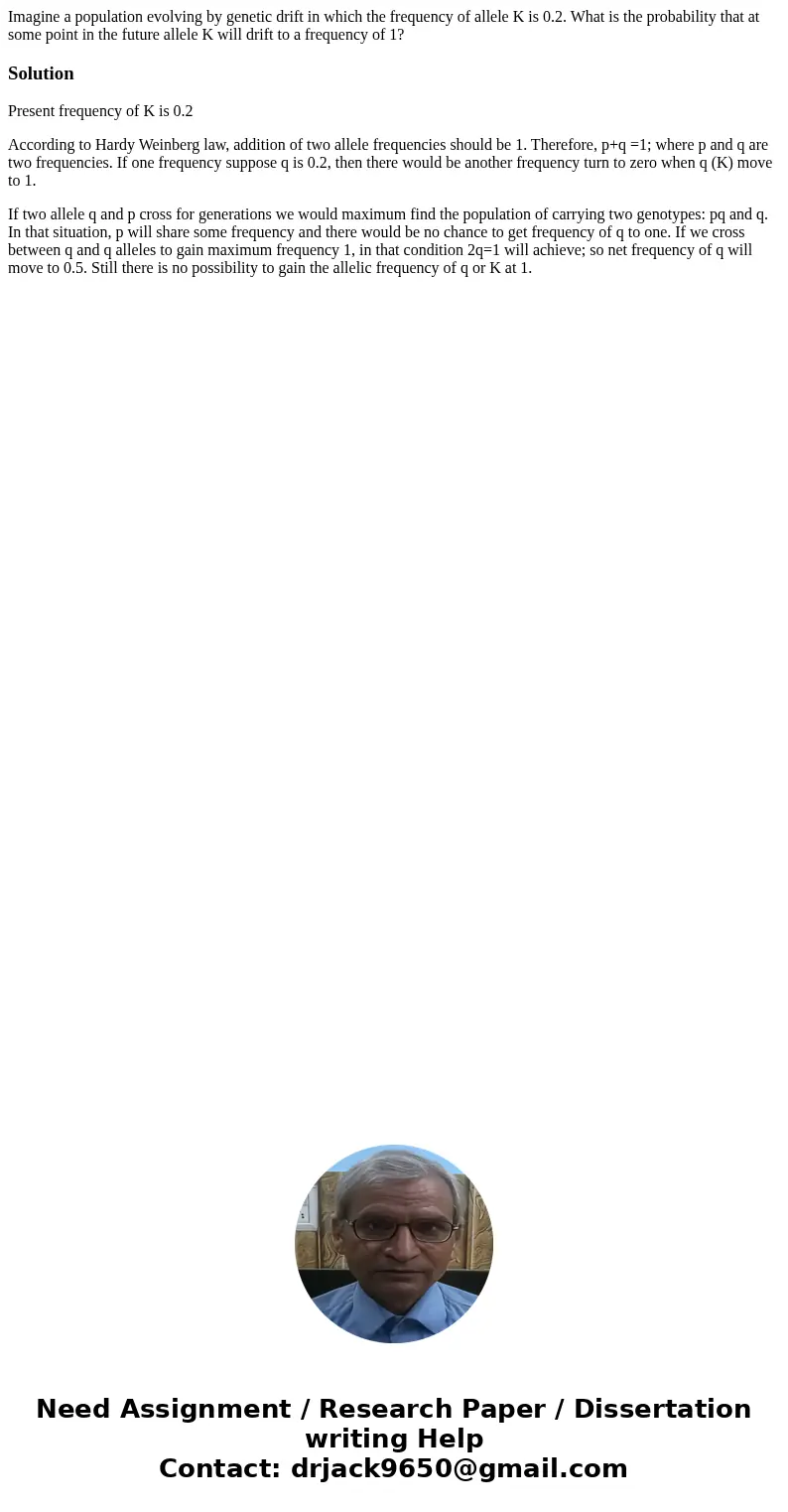Imagine a population evolving by genetic drift in which the
Imagine a population evolving by genetic drift in which the frequency of allele K is 0.2. What is the probability that at some point in the future allele K will drift to a frequency of 1?
Solution
Present frequency of K is 0.2
According to Hardy Weinberg law, addition of two allele frequencies should be 1. Therefore, p+q =1; where p and q are two frequencies. If one frequency suppose q is 0.2, then there would be another frequency turn to zero when q (K) move to 1.
If two allele q and p cross for generations we would maximum find the population of carrying two genotypes: pq and q. In that situation, p will share some frequency and there would be no chance to get frequency of q to one. If we cross between q and q alleles to gain maximum frequency 1, in that condition 2q=1 will achieve; so net frequency of q will move to 0.5. Still there is no possibility to gain the allelic frequency of q or K at 1.

 Homework Sourse
Homework Sourse